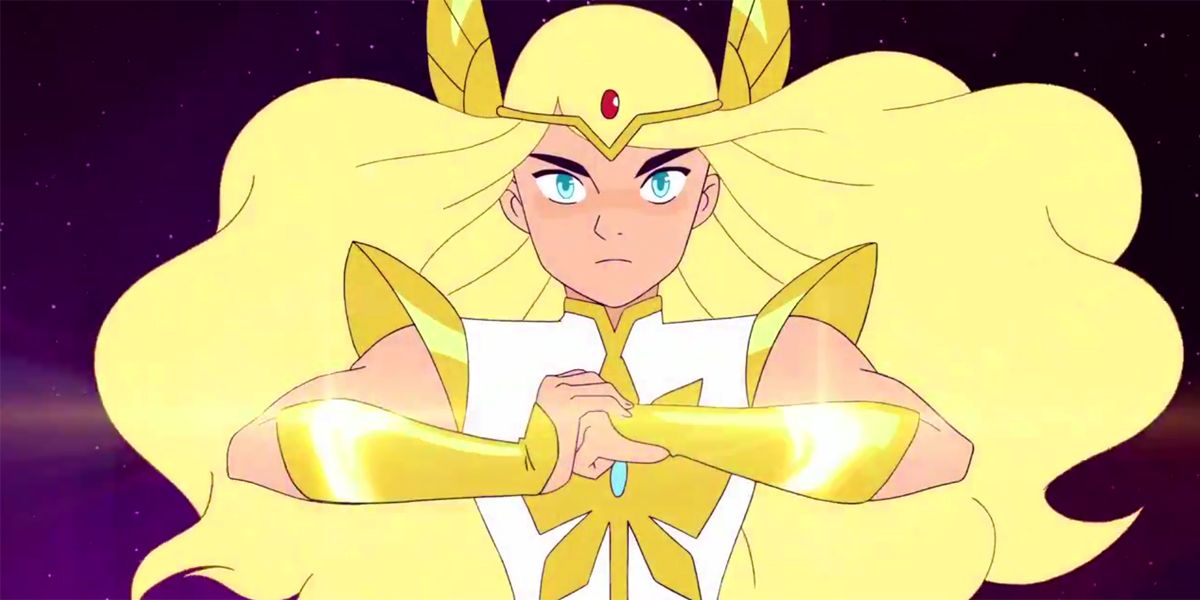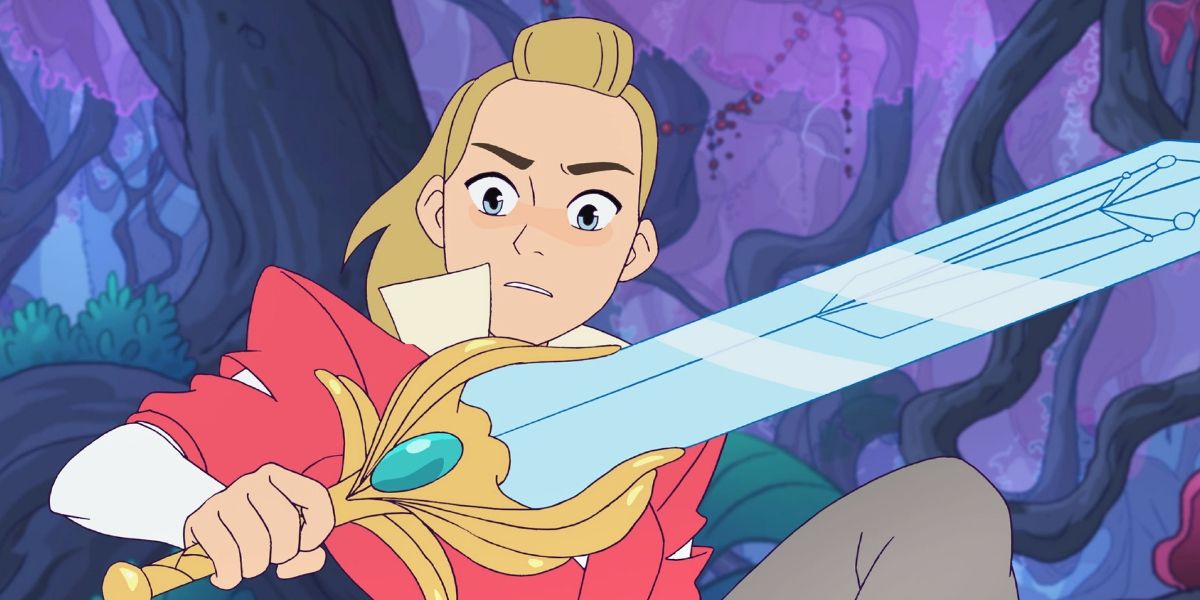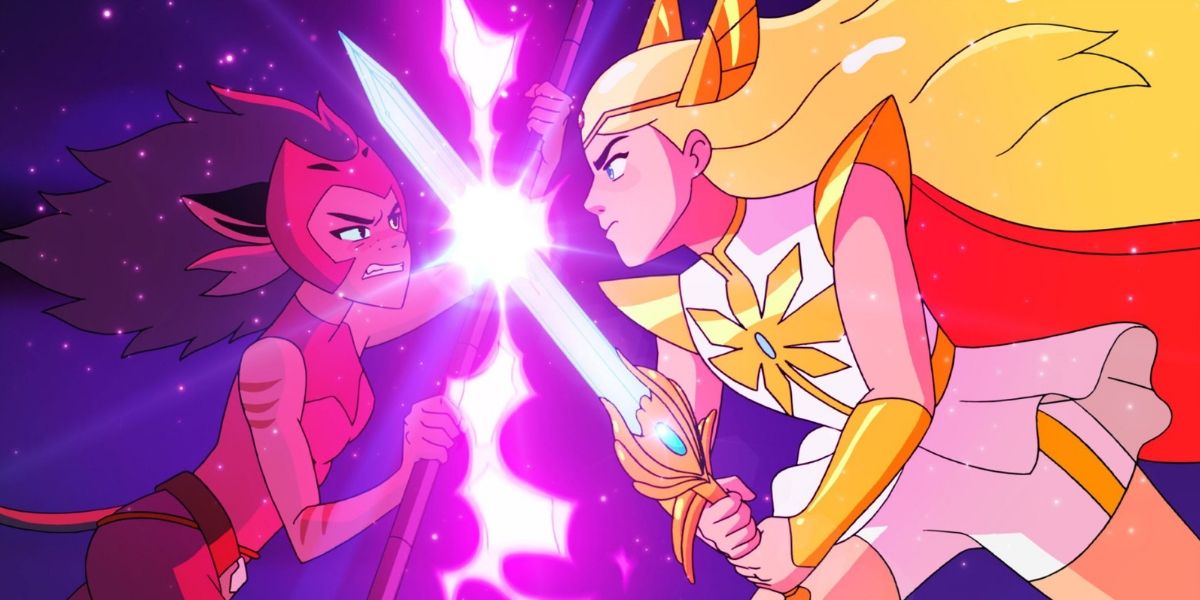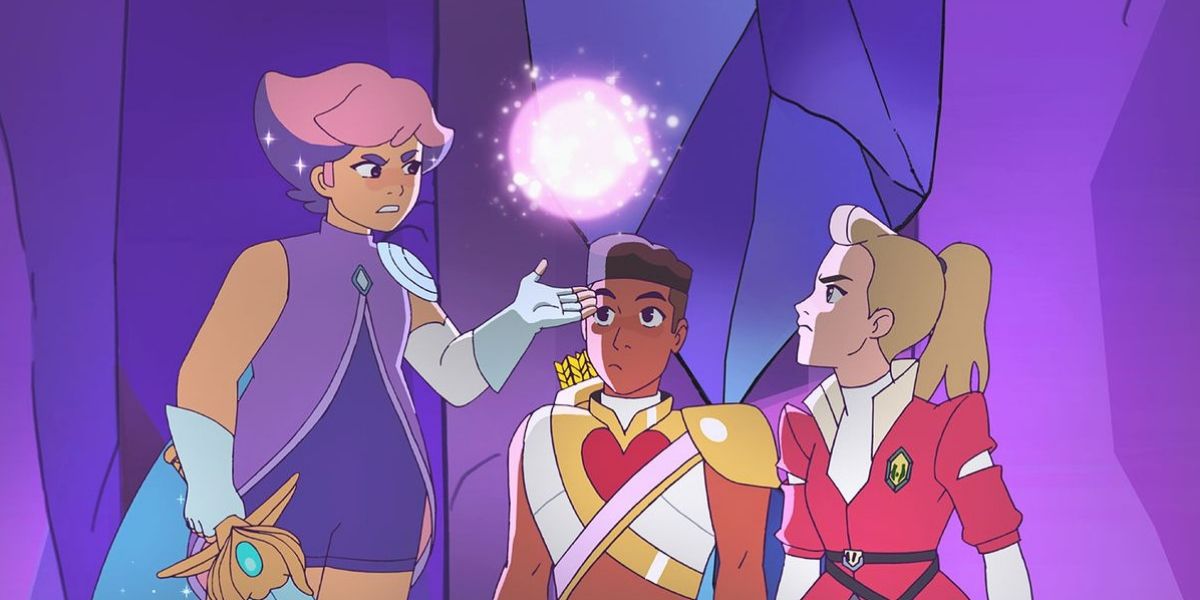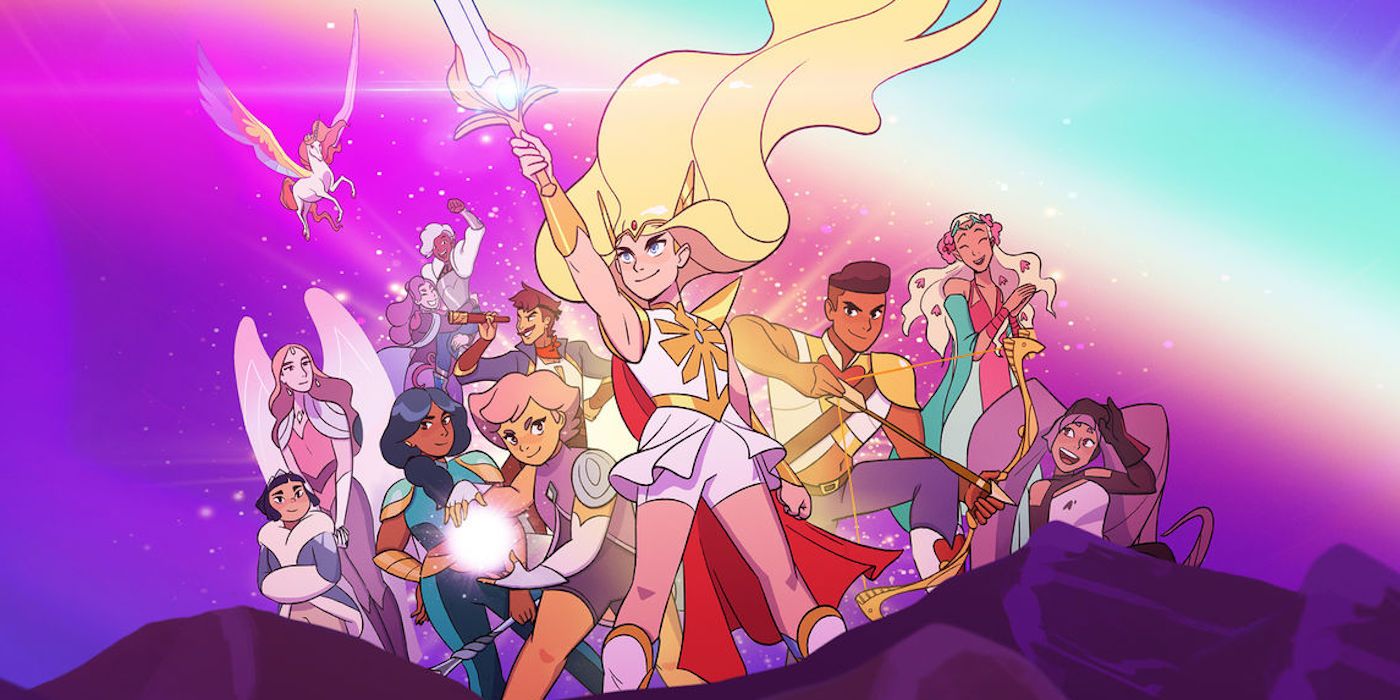On the surface, Netflix’s She-Ra and the Princesses of Power has the same premise as the She-Ra: Princess of Power show from the '80s. A young woman named Adora turns into She-Ra thanks to a magical sword and then fights with the rebellion against the evil Lord Hordak. But while a lot of the character names from the original show have crossed over, showrunner Noelle Stevenson has ushered in a new age of She-Ra, one that children and adults can appreciate.
The emphasis on making the title of the new show about princesses and not just one princess is deliberate. The creative minds behind She-Ra and the Princesses of Power have assembled a team of strong brave girls with different personalities, body types and relationships to others. Because of the strength of the writing, everything about the show seems unforced, and viewers of all ages can take comfort in that.
Adora and She-Ra
Adora grows up believing that princesses are evil, but when she leaves the Fright Zone for the first time, she learns her lifelong enemies are the heroes after all. She witnesses the devastation the Horde causes on civilian populations, and it shocks her. Adora changes her long-held beliefs based on what she experiences, thereby teaching kids to be flexible and open-minded when they go out and experience the world. Not everything we learn at home reflects the truth of what’s happening outside of our comfort zone.
When Adora turns into She-Ra, her body changes. She grows to somewhere around 8 feet tall, and her muscle mass increases. Girls still get teased when they’re tall in their childhoods, but the other characters are in awe of She-Ra’s height. We see She-Ra as strength, pure and simple, with her defined arms and athletic legs. She can lift wagons over her head! The She-Ra redesign, for all the characters, focuses on power. Unlike the original She-Ra show, none of the characters wear clothes that are unnecessarily revealing.
Catra + Adora = Catdora
Adora’s best friend growing up is Catra, a Horde soldier with a wild streak. Adora and Catra have that playful rapport you only get when you’ve been best friends for a long time. These two have quickly become a fan-favorite pairing, as there are hints of an underlying romantic tension between them, especially in the Princess Ball scenes.
The Princess Ball is a very formal affair that all the princesses, regardless of affiliation in the war, are invited to. Catra is the plus one of Princess Scorpia, whose family has aligned themselves with the Horde. She wears a maroon suit and dances with Adora, dipping her while teasing that something is about to go down.
It’s a scene we’ve seen in movies like Mr. and Mrs. Smith. They’re clearly about to fight, but there is an electric current of chemistry. We just don’t know what kind, yet, and that’s fine. The point is there’s potential for it, and it’s in a children’s show. Normalizing queer relationships means representing them in our media for our children to see growing up.
NEXT PAGE: Princesses of Power Gives Kids Role Models Aside From She-Ra
Glimmer
Glimmer is another princess worth highlighting because of how relatable she is. First, she has a pear-shaped body that many have, yet it isn’t often seen in cartoon heroes. Secondly, Glimmer has a fear that her best friend, Bow, is tired of her and will leave her. Bow is a crop-top loving boy who has an amazing ability to befriend just about anyone. Having confusing feelings about your best friend and their relationships with other people is something many kids go through as they grow up.
Kids not only are in the process of forming their own identities, but they also are beginning to figure out their relationships to others. Glimmer has a pretty strong sense of who she is, a girl who loves “fist-to-face sparkles,” but that doesn’t mean she’s confident about herself and her relationships. We’ve all felt that pinch of jealousy when our best friend starts paying attention to someone else. We’ve all had that fear someone we love will leave us for someone else. Glimmer not only has a realistic body type, but her emotional struggles are ones we’ve all had.
Another example of this is how Glimmer often clashes with her mother for being too impulsive. Queen Angella is worried about Glimmer’s safety first and foremost, while Glimmer feels her mother doesn’t respect her. Glimmer is a commander in the fight against the Horde, yet she doesn’t have the freedom to be aggressive in the fight. Similarly, kids know when they’re being talked down to, and often feel that their parents don’t understand them.
Additionally, the imagery of Glimmer’s powers is great. She’s sparkly but will punch you; she’s adorable and fierce. This shows that girls and boys need not be limited to one type of strength. We are no longer working with just the traditionally feminine or masculine but with the entire spectrum.
The Other Princesses of Power
The other princesses we meet along the way are Mermista, Entrapta, Perfuma, Frosta, Spinnerella and Netossa. If you put them in a line-up, just the way they’re drawn alone shows the diversity of this team. Personality-wise, there’s a princess for everyone.
The snarky kids will love Mermista, who is the opposite of the sweet Little Mermaid stereotype. Plus, she’s got a silly pirate captain, Sea Hawk, as her go-to date, who’s also pretty lovable when he’s not burning ships down (actually, that was pretty lovable). The science-enthused often misunderstood kids will relate to Entrapta, who is definitely the nerdy princess of the group. The kids who love nature will gravitate towards Perfuma, whose peaceful nature belies her fighting spirit. Princess Frosta is the Shakespearean quote “though she be but little, she is fierce” incarnate, and she is the perfect match for littles who are still singing “Let It Go” from Frozen.
Spinnerella and Netossa are briefly introduced early in the season, but no one knows what they do, and the episode quickly moves forward. We really get to know them in episode 13. The two walk in with linked arms, suggesting a romantic relationship. The focus of the episode, however, is the battle at Bright Moon; there’s a lot going on! But, we appreciate this small moment where Spinnerella assures Netossa by saying, “Yes, darling, you have beautiful nets,” and hugging her. It’s sweet that it’s this passing moment these two characters have, which also happens to serve as part of our introduction to them. They’re meant to be seen as a couple.
Princesses have come a long way since the 80s. She-Ra and the Princesses of Power gives children the representation many of us did not have growing up, and honestly, it’s about time.

